Acoustic survey:
UNESCO acoustic layer
Sound is not the dominant sense in the perception of reality. However, it has a special place in art and aesthetic experiences. It is an inseparable element of the landscape and it characterizes and characterizes architectural objects. As part of the UNESCO Multisensory project, employees of the Department of Mechanics and Vibroacoustics, AGH University of Science and Technology in Krakow, under the supervision of prof. Jerzy Wiciak performed the recording and analysis of the soundscape and carried out detailed acoustic tests of the churches in Lipnica Murowana. The test results were compiled both in the form of numerical data: reverberation time (figure x), clarity for speech and music, speech intelligibility, spatiality of sound and others, but also in the form of a base of sounds and impulse responses. This information allows to fully recreate and characterize the acoustics of the tested objects, and can also be used in the virtualization of the acoustic field. All recordings and measurements were made with the use of the most modern technologies, including ambisonia, which allows for fuller immersion during a virtual tour of Lipnica monuments. It should be emphasized that the acoustic activities undertaken as part of the project are unique on a global scale, because most of this type of digitization activities focuses on the visual sphere, and the sound is at most a stereo-complementary.
1
2017
Multisensory UNESCO – digitization of tangible and intangible heritage of
Lipnica Murowana
Acoustic measurements in the churches of Lipnica Murowana. The basic parameters and the obtained results of the calculations are presented below. Selected impulse responses recorded in churches can be downloaded in ambisonic (FuMa), binaural, stereo and surround formats.

Fig. 1 Reverberation time of churches in Lipnica Murowana as a function of frequency.
Download impulse responses:
Listen to impulse responses:
St. Leonard in Lipnica Murowana
St. Andrew in Lipnica Murowana
St. Simon in Lipnica Murowana
2
2018
Multisensory UNESCO 2. Digitization of the church heritage of southern Małopolska
on the 15th anniversary of being entered on the UNESCO list
Acoustic measurements in wooden churches of Southern Poland, included in the UNESCO list, were made according to the ISO 3382-3: 2012 standard. The basic parameters and the obtained results of the calculations are presented below. Selected impulse responses recorded in churches can be downloaded in ambisonic (FuMa), binaural, stereo and surround formats.

Fig. 2 Comparison of the frequency characteristics of the reverberation time of wooden churches in Southern Poland, entered on the UNESCO list
Tab. 1. List of acoustic parameters of wooden churches in Southern Poland, entered on the UNESCO list
| Churches of Southern Poland | C80 [dB] | C50 [dB] | BR | TR | STI |
|---|---|---|---|---|---|
| Church of St. Filip and Jakub in Sękowa | 6,7 | 4,1 | 1 | 0,75 | 0,62″ |
| Church of St. Michael the Archangel in Binarowa | 9,5 | 6,6 | 0,76 | 0,78 | 0,67″ |
| Church of All Saints in Blizne | 10,9 | 8 | 0,8 | 0,82 | 0,65″ |
| Church of the Assumption of the Blessed Virgin Mary in Haczów | 1,77 | 10,2 | 8 | 0,79 | 0,78″ |
| Church of St. Michael the Archangel in Dębno | 9,7 | 6,2 | 0,88 | 0,78 | 0,7″ |
Legend – acoustic parameters:
C50 – sound clarity for speech
C80 – sound clarity for music
STI – speech intelligibility on a scale of 0-1
BR – bass indicator
TR – treble indicator
Legend – impulse responses:
Stereo.wav – two-channel XY stereo
Bformat.wav – the ambisonic format in the FuMa convention
Binaural.wav – binaural format
Surround-51.wav – surround 5.1 ITU-R BS 775
Surround-71.wav – surround 7.1 ITU-R BS 775
Download impulse responses:
Church of St. Philip and Jacob
in Sękowa
Church of St. Michael the Archangel
in Binarowa
Church of All the saints
in Blizne
Church of the Assumption of the Blessed Virgin Mary
in Haczów
Listen to impulse responses:
Church of St. Michael the Archangel
in Binarowa
Church of St. Michael the Archangel
in Dębno
Church of St. Philip and Jacob
in Sękowa
Church of All the saints
in Blizne
Church of the Assumption of the Blessed Virgin Mary
in Haczów
3
2019
Multisensory UNESCO 3. Digitization of 8 wooden churches in the Polish region of the Carpathians entered on the UNESCO list
Acoustic measurements in wooden churches of the Carpathian region in Poland, entered on the UNESCO list, were made according to the ISO 3382-3: 2012 standard. The basic parameters and the obtained results of the calculations are presented below. Selected impulse responses recorded in churches can be downloaded in ambisonic (FuMa), binaural, stereo and surround formats.
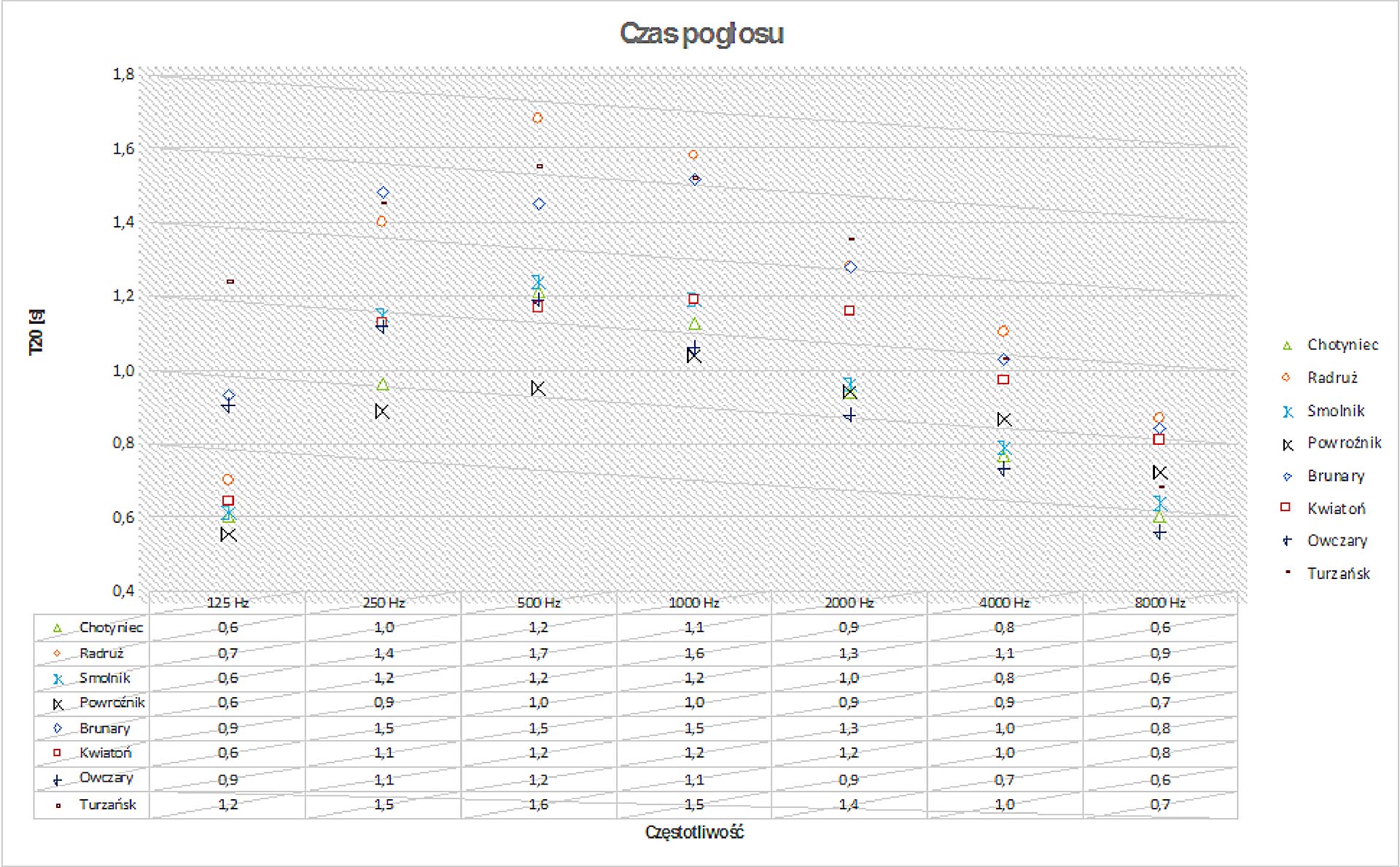
Fig. 3 Comparison of the frequency characteristics of the reverberation time of the wooden churches of Southern Poland, entered on the UNESCO list
Tab. 2. List of acoustic parameters of wooden churches in the Carpathian region in Poland, entered on the UNESCO list
| Orthodox churches of Southern Poland | C80 [dB] | C50 [dB] | BR | TR | STI |
|---|---|---|---|---|---|
| Orthodox Church of the Nativity of the Holy Mother of God in Chotyniec | 5,9 | 3 | 0,7 | 0,7 | 0,7 |
| Orthodox church of St. Paraskeva in Radruż | 3,8 | 0,9 | 0,6 | 0,7 | 0,6 |
| Orthodox church of St. Michael the Archangel in Smolnik | 7,9 | 4,9 | 0,7 | 0,7 | 0,6 |
| Orthodox church of St. Jakub in Powroźnik | 8,4 | 5,1 | 0,7 | 0,9 | 0,7 |
| Orthodox church of St. Michael the Archangel in Brunary Wyżne | 6,7 | 4,3 | 0,8 | 0,8 | 0,6 |
| Orthodox church of St. Paraskeva in Kwiatoń | 6,5 | 3,9 | 0,8 | 0,9 | 0,6 |
| Orthodox church of the Protection of the Mother of God in Owczary | 7,8 | 5,1 | 0,9 | 0,7 | 0,7 |
| Orthodox church of St. Michael the Archangel in Turzańsk | 7 | 5,1 | 0,9 | 0,8 | 0,6 |
Legend – acoustic parameters:
C50 – sound clarity for speech
C80 – sound clarity for music
STI – speech intelligibility on a scale of 0-1
BR – bass indicator
TR – treble indicator
Legend – impulse responses:
Stereo.wav – two-channel XY stereo
Bformat.wav – the ambisonic format in the FuMa convention
Binaural.wav – binaural format
Surround-51.wav – surround 5.1 ITU-R BS 775
Surround-71.wav – surround 7.1 ITU-R BS 775
Download impulse responses:
Orthodox Church of the Nativity of the Holy Mother of God in Chotyniec
Orthodox church of St. Paraskeva
in Radruż
Orthodox church of St. Michael the Archangel in Smolnik
Orthodox church of St. Jakub
in Powroźnik
Orthodox church of St. Michael the Archangel in Brunary Wyżne
Orthodox church of St. Paraskeva
in Kwiatoń
Orthodox church of the Protection of the Mother of God in Owczary
4
2020
Multisensory UNESCO 4. Digitization of Cracow’s cultural heritage entered on the UNESCO list
The acoustic measurements of the spatial impulse responses of the Barbican courtyard were made using the ISO 3382-3: 2012 standard, respectively.

Fig 1. Scheme of location of measurement points (R – microphone position, S – sound source position)
Basic parameters and calculation results are presented below.
Selected impulse responses recorded in the courtyard can be downloaded in ambisonic (FuMa), binaural, stereo and surround formats.
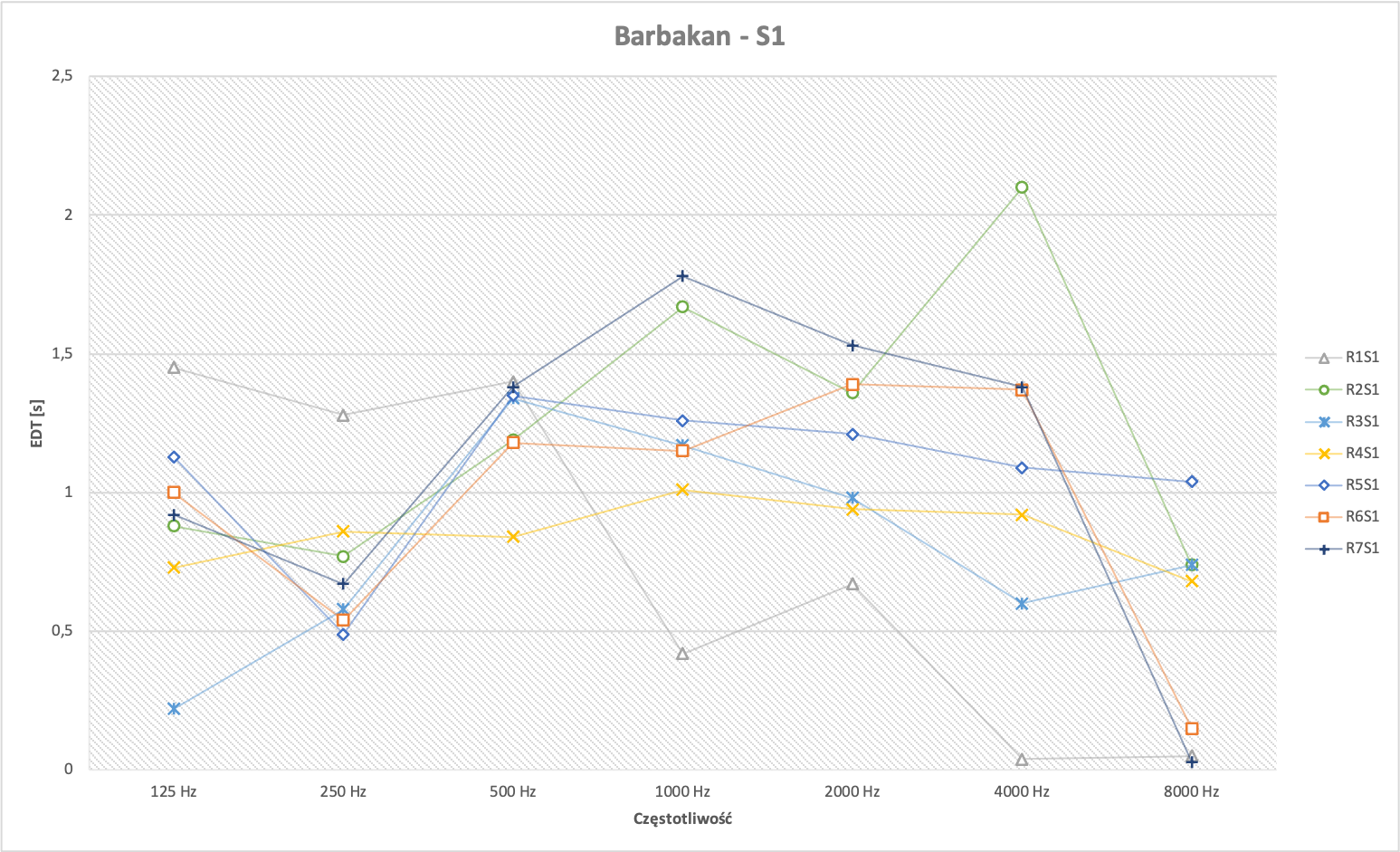
Figure 2. Frequency characteristics of the EDT early decay time of the Barbican courtyard for 3 different locations of the sound source S1

Figure 3. Frequency characteristics of the EDT early decay time of the Barbican courtyard for 3 different locations of the sound source S2
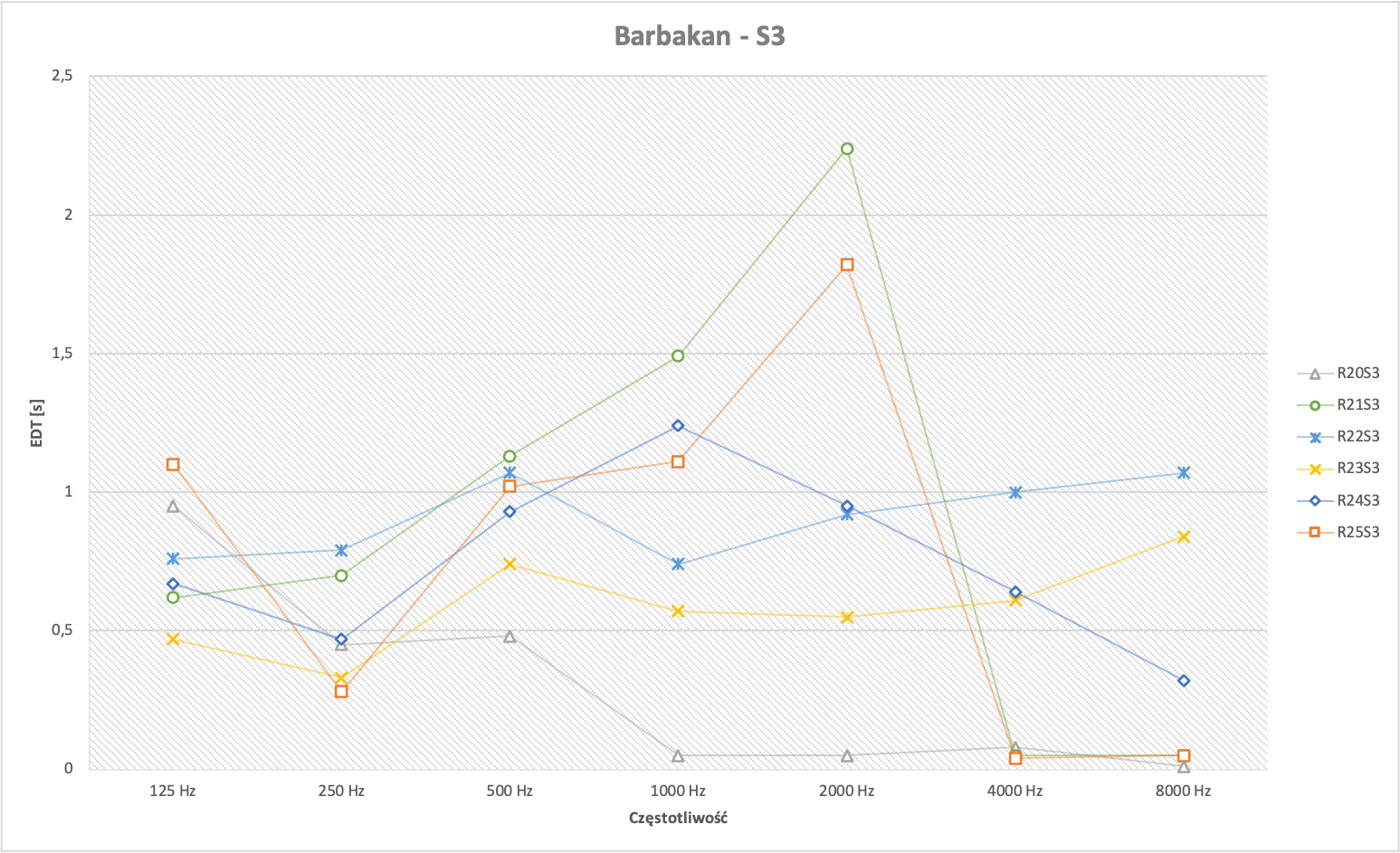
Figure 4. Frequency characteristics of the EDT early decay time of the Barbican courtyard for 3 different locations of the sound source S3
Table. 1. List of acoustic parameters in the courtyard of the Barbican for 3 different locations of the sound source (S1, S2, S3)
| C80 [dB] | C50 [dB] | BR | TR | STI | |
|---|---|---|---|---|---|
| R1S1 | 13,1 | 9,6 | 0,74 | 0,91 | 0,813 |
| R2S1 | 5,7 | 3,5 | 0,51 | 0,98 | 0,698 |
| R3S1 | 3,9 | -0,9 | 0,52 | 0,87 | 0,657 |
| R4S1 | 3 | -0,1 | 1,07 | 1,03 | 0,658 |
| R5S1 | 2,9 | 0,2 | 0,75 | 0,76 | 0,625 |
| R6S1 | 8,2 | 5 | 0,65 | 0,85 | 0,718 |
| R7S1 | 8 | 5,6 | 0,55 | 0,96 | 0,725 |
| R8S2 | 16,8 | 13 | 0,85 | 1,01 | 0,913 |
| R8S2 | 19,6 | 13,9 | 0,87 | 0,86 | 0,919 |
| R9S2 | 12,4 | 9,8 | 0,65 | 0,92 | 0,826 |
| R10S2 | 8,5 | 6,5 | 0,58 | 0,8 | 0,747 |
| R11S2 | 5,2 | -0,2 | 0,51 | 1,06 | 0,665 |
| R12S2 | 6,9 | 1,2 | 0,54 | 0,85 | 0,701 |
| R13S2 | 6,1 | 1,6 | 0,52 | 1,03 | 0,682 |
| R14S2 | 7,6 | 5,2 | 0,63 | 0,95 | 0,72 |
| R15S2 | 10,6 | 8,2 | 0,59 | 0,85 | 0,759 |
Legend:
C50 – sound clarity for speech
C80 – sound clarity for music
STI – speech intelligibility on a scale of 0-1
BR – bass index
TR – treble indicator
Download impulse responses:
Stereo – two-channel XY stereo
Barbican – Stereo
Bformat – FuMa ambisonic format
Barbican – Bformat
Binauralv – binaural format
Barbican – Binaural
Surround-51 – surround 5.1 ITU-R BS 775
Barbican – Surround-51
Surround-71 – surround 7.1 ITU-R BS 775
Barbican – Surround-71
Binaural sound of the surroundings of the Florian’s Gate during the COVID-19 pandemic (for correct perception, the sound should be played on the headphones).
Report on the study of the soundscape of the surroundings of the Florian Gate:
5
2021
Multisensory UNESCO 5. Digitization of the cultural heritage of the Sanctuary in Kalwaria Zebrzydowska (UNESCO)
Acoustic measurements of spatial impulse responses of the Basilica of Our Lady of the Angels in Kalwaria Zebrzydowska were performed using the ISO 3382-3:2012 standard. The location of the measurement points is shown in the schematic drawing 1.
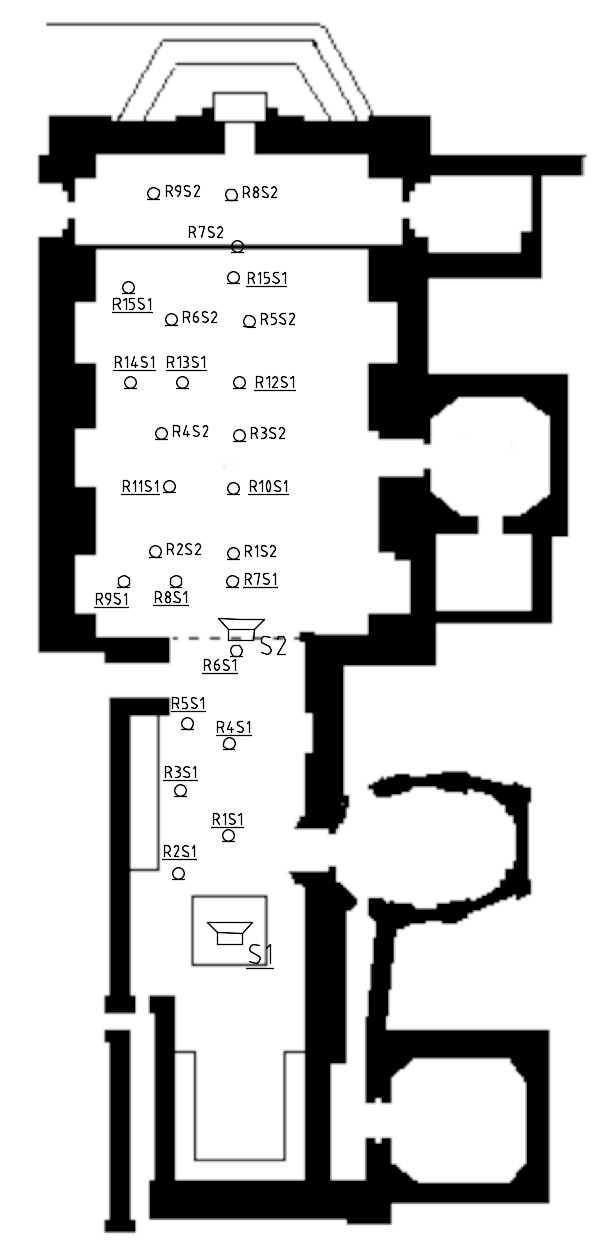
Figure 1. Scheme of location of measurement points (R – microphone position, S – sound source position) [base: Olocom, CC BY-SA 4.0, commons.wikimedia.org/w/index.php?curid=11882073.png]
Basic parameters and calculation results are presented in the charts and tables below.
Selected impulse responses recorded in the Basilica can be downloaded in ambisonic (FuMa), binaural, stereo and surround formats.

Figure 2. Frequency characteristics of the Early Decay Time EDT of the Basilica of Our Lady of the Angels in Kalwaria Zebrzydowska for two different sound source locations (S1, S2)

Figure 3. List of frequency characteristics of the Reverberation Time using the T20 method of the Basilica of Our Lady of the Angels in Kalwaria Zebrzydowska for two different sound source locations (S1, S2)
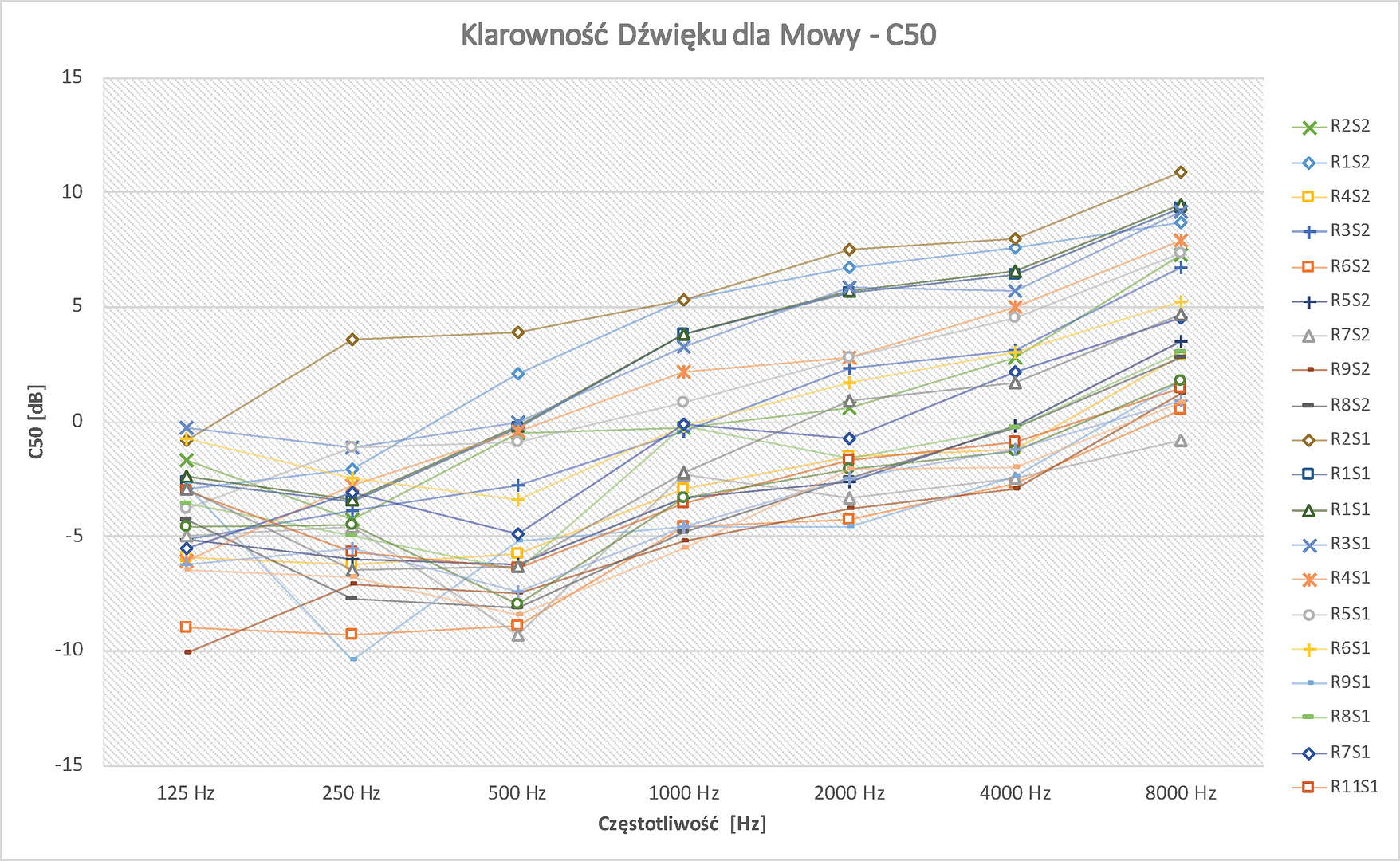
Figure 4. List of frequency characteristics of Sound Clarity for Speech C50 of the Basilica of Our Lady of the Angels in Kalwaria Zebrzydowska for two different locations of the sound source (S1, S2)

Figure 5. List of frequency characteristics of Sound Clarity for Music C80 of the Basilica of Our Lady of the Angels in Kalwaria Zebrzydowska for two different sound source locations (S1, S2)
Table 1. List of acoustic parameters of the Basilica of Our Lady of the Angels in Kalwaria Zebrzydowska for 2 different locations of the sound source (S1, S2)
| C80 [dB] | C50 [dB] | BR | TR | STI | |
|---|---|---|---|---|---|
| R2S2 | 5,2 | 4,4 | 0,6 | 0,79 | 0,526 |
| R1S2 | 8,8 | 8,1 | 0,71 | 0,78 | 0,642 |
| R4S2 | 1,7 | 0,1 | 0,7 | 0,79 | 0,44 |
| R3S2 | 5,4 | 4,6 | 0,52 | 0,8 | 0,532 |
| R6S2 | 0,6 | -2 | 0,39 | 0,81 | 0,411 |
| R5S2 | 2,2 | 0,6 | 0,33 | 0,8 | 0,458 |
| R7S2 | 0,7 | -2,1 | 0,64 | 0,95 | 0,431 |
| R9S2 | 0,5 | -1,6 | 0,53 | 0,92 | 0,394 |
| R8S2 | 1,9 | 0,2 | 0,51 | 0,88 | 0,432 |
| R2S1 | 11,3 | 9,1 | 0,67 | 0,91 | 0,709 |
| R1S1 | 9,3 | 7,4 | 0,35 | 0,79 | 0,624 |
| R1S1 | 9,4 | 7,6 | 0,37 | 0,8 | 0,626 |
| R3S1 | 9,1 | 7,3 | 0,56 | 0,98 | 0,63 |
| R4S1 | 7,5 | 6 | 0,54 | 0,99 | 0,589 |
| R5S1 | 6,7 | 5,2 | 0,43 | 0,9 | 0,573 |
| R6S1 | 4,9 | 3,6 | 0,46 | 0,76 | 0,537 |
| R9S1 | 0,2 | -1,3 | 0,59 | 0,89 | 0,415 |
| R8S1 | 1,8 | 0,7 | 0,46 | 0,8 | 0,474 |
| R7S1 | 3,4 | 2,3 | 0,64 | 0,91 | 0,498 |
| R11S | 0,9 | -0,3 | 0,44 | 0,78 | 0,429 |
| R10S | 3,1 | 2,2 | 0,43 | 0,81 | 0,499 |
| R14S | -1,5 | -2,9 | 0,53 | 0,84 | 0,379 |
| R13S | 0,2 | -1,9 | 0,85 | 0,98 | 0,41 |
| R12S | 0,5 | -0,7 | 0,63 | 0,81 | 0,434 |
| R16S | 0,3 | -1,1 | 0,53 | 0,82 | 0,41 |
| R15S | 0 | -1,5 | 0,39 | 0,8 | 0,394 |
| Średnia | 3,6 | 2,1 | 0,53 | 0,85 | 0,496 |
| Mediana | 2,1 | 0,7 | 0,53 | 0,81 | 0,466 |
| Min | -1,5 | -2,9 | 0,33 | 0,76 | 0,379 |
| Max | 11,3 | 9,1 | 0,85 | 0,99 | 0,709 |
Legend:
C50 – sound clarity for speech
C80 – sound clarity for music
STI – speech intelligibility on a scale of 0-1
BR – bass index
TR – treble indicator
Download impulse responses:
Stereo – two-channel XY stereo
Kalwaria – Stereo
Bformat – FuMa ambisonic format
Kalwaria – Bformat
Binaural – binaural format
Kalwaria – Binaural
Surround-51 – surround 5.1 ITU-R BS 775
Kalwaria – Surround-51
Surround-71 – surround 7.1 ITU-R BS 775
Kalwaria – Surround-71
6
2022
UNESCO Multisensory 5. Digitization of the cultural heritage of the Sanctuary in Kalwaria Zebrzydowska (UNESCO)
St. Anthony and the Chapel of the Immaculate Conception
Acoustic measurements of the spatial impulse responses of the chapels in Kalwaria Zebrzydowska were carried out using the ISO 3382-3:2012 standard. The basic parameters and the obtained calculation results are presented in the charts and tables below. Selected impulse responses recorded in the Basilica can be downloaded in ambisonic (FuMa), binaural, stereo and surround formats.
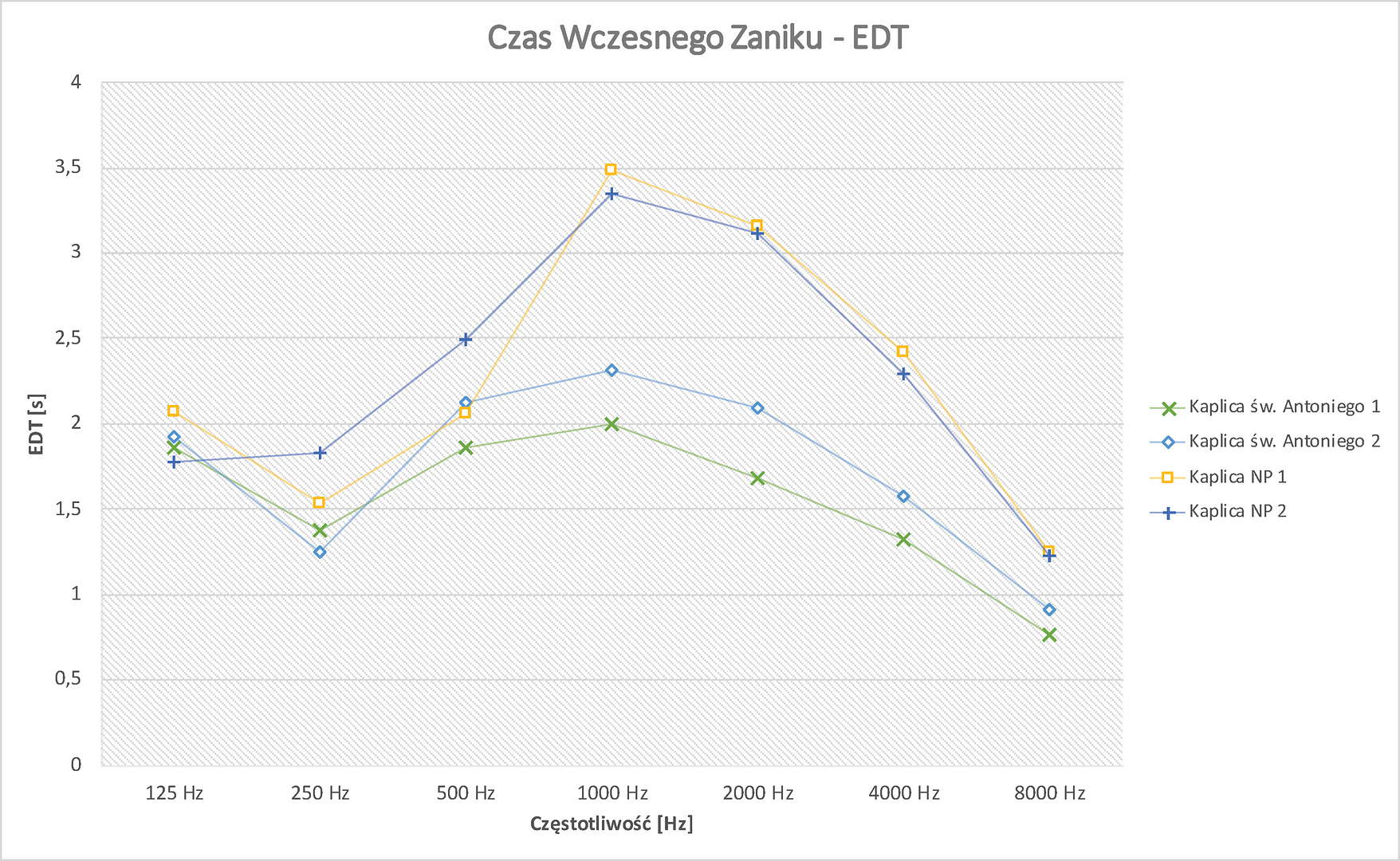
Figure 1. List of Early Decay Time frequency characteristics of the EDT acoustics of the Chapel of St. Anthony and the Chapel of the Immaculate Conception in the Basilica of Our Lady of the Angels in Kalwaria Zebrzydowska
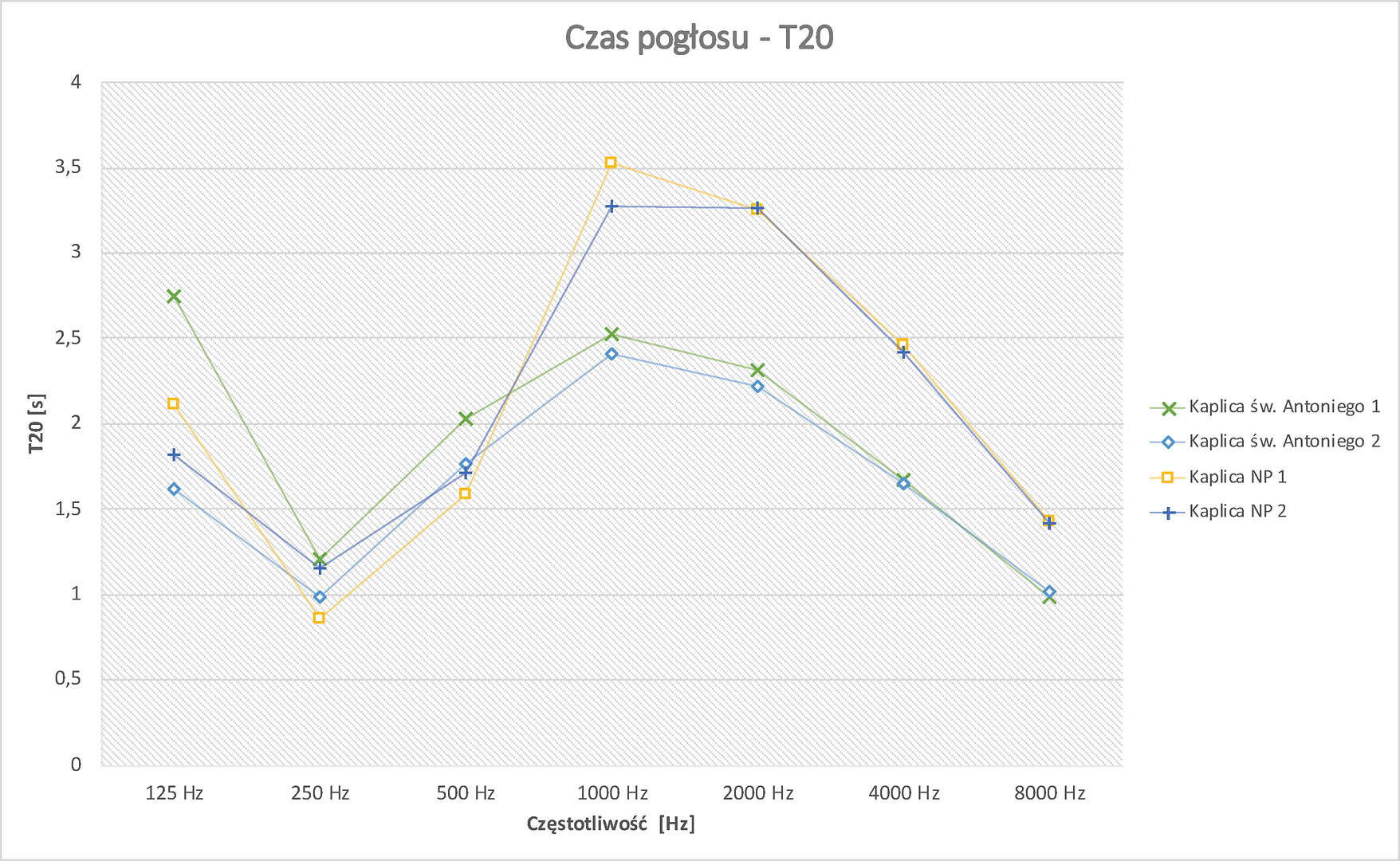
Figure 2. List of frequency characteristics of the Reverberation Time using the T20 method of the Chapel of St. Anthony and the Chapel of the Immaculate Conception in the Basilica of Our Lady of the Angels in Kalwaria Zebrzydowska
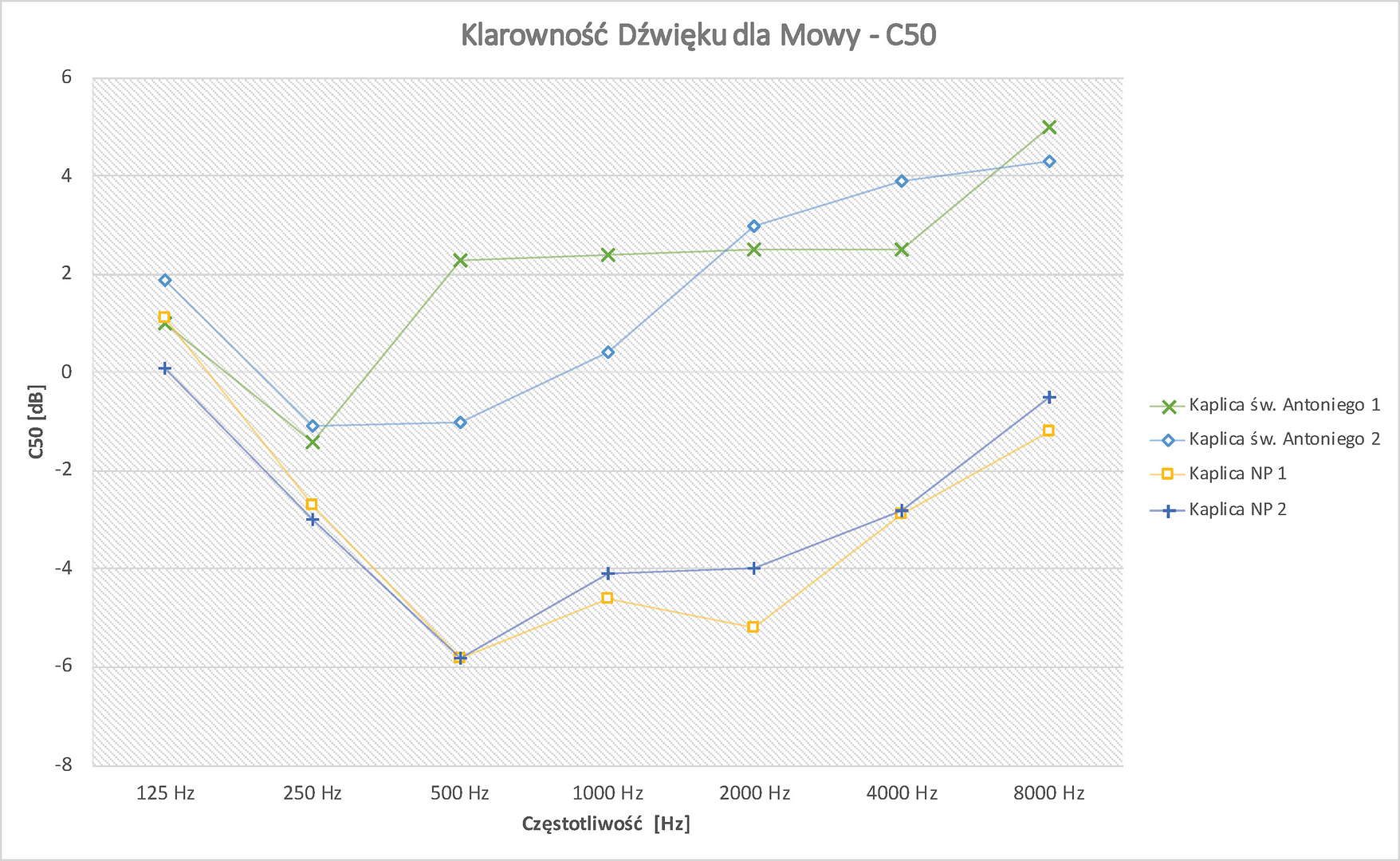
Figure 3. List of frequency characteristics of Sound Clarity for Speech C50 of the Chapel of St. Anthony and the Chapel of the Immaculate Conception in the Basilica of Our Lady of the Angels in Kalwaria Zebrzydowska
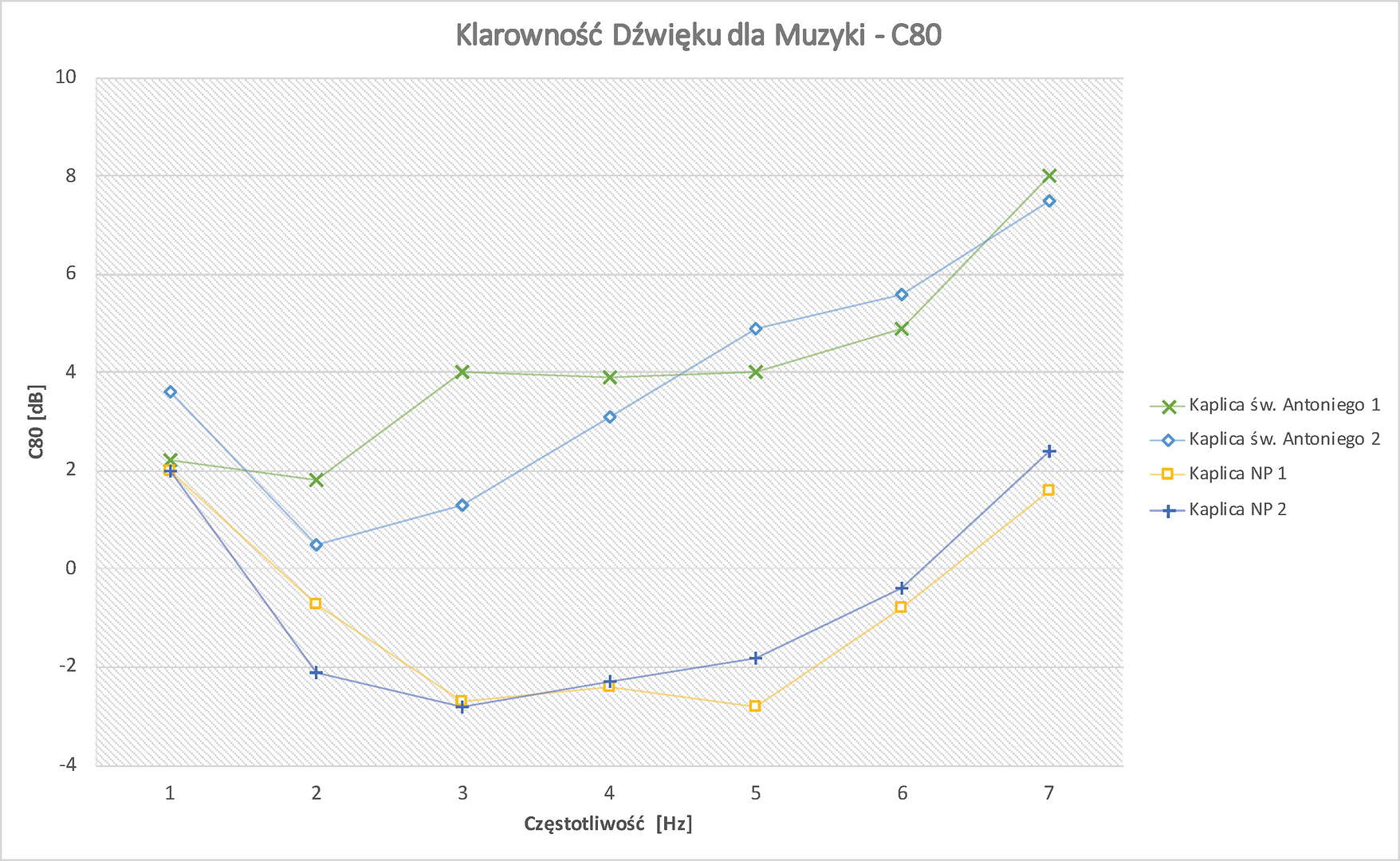
Figure 4. List of Frequency Responses of Sound Clarity for C80 Music of St. George’s Chapel Anthony and the Chapel of the Immaculate Conception in the Basilica of Our Lady of the Angels in Kalwaria Zebrzydowska
Table 1. List of acoustic parameters of the Chapel of St. Anthony and the Chapel of the Immaculate Conception in the Basilica of Our Lady of the Angels in Kalwaria Zebrzydowska
| C80 [dB] | C50 [dB] | BR | TR | STI | |
|---|---|---|---|---|---|
| Chapel of St. Anthony 1 | 0 | -2.3 | 0.58 | 1.12 | 0.435 |
| Chapel of St. Anthony 2 | 0.4 | -1.8 | 0.60 | 1.14 | 0.444 |
| Chapel IC 1 | 7.1 | 4.9 | 0.87 | 0.88 | 0.596 |
| Chapel IC 2 | 6.5 | 4.2 | 0.62 | 0.93 | 0.594 |
Legend:
C50 – sound clarity for speech
C80 – sound clarity for music
STI – speech intelligibility on a scale of 0-1
BR – bass index
TR – treble indicator
Download impulse responses:
Stereo – two-channel XY stereo
Kalwaria – Stereo
Bformat – FuMa ambisonic format
Kalwaria – Bformat
Binaural – binaural format
Kalwaria – Binaural
Surround-51 – surround 5.1 ITU-R BS 775
Kalwaria – Surround-51
Surround-71 – surround 7.1 ITU-R BS 775
Kalwaria -Surround-71
Example recordings in the ambisonic format can be listened to using the Cat3DA web player player.spektrogram.com/ which allows you to track the listener’s head to play sounds from the appropriate directions. Recordings should be listened to using headphones.
